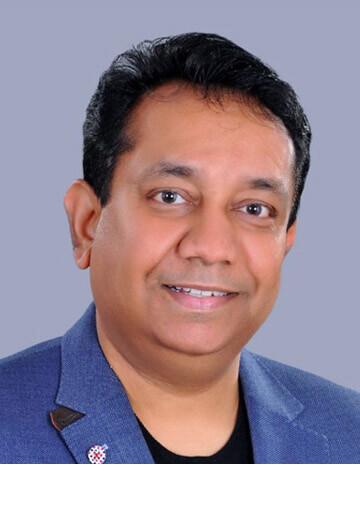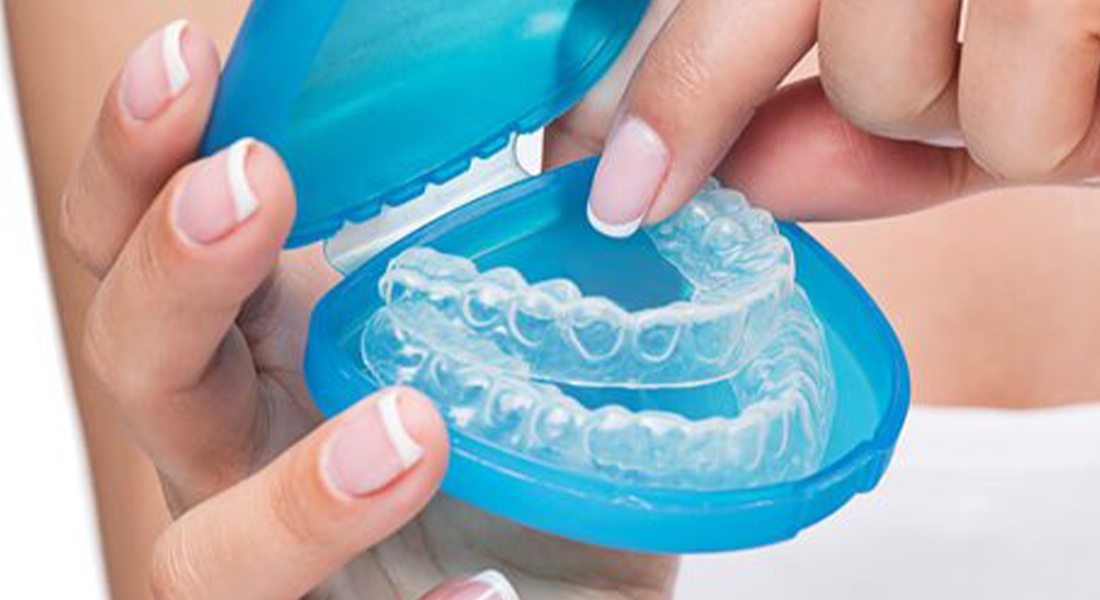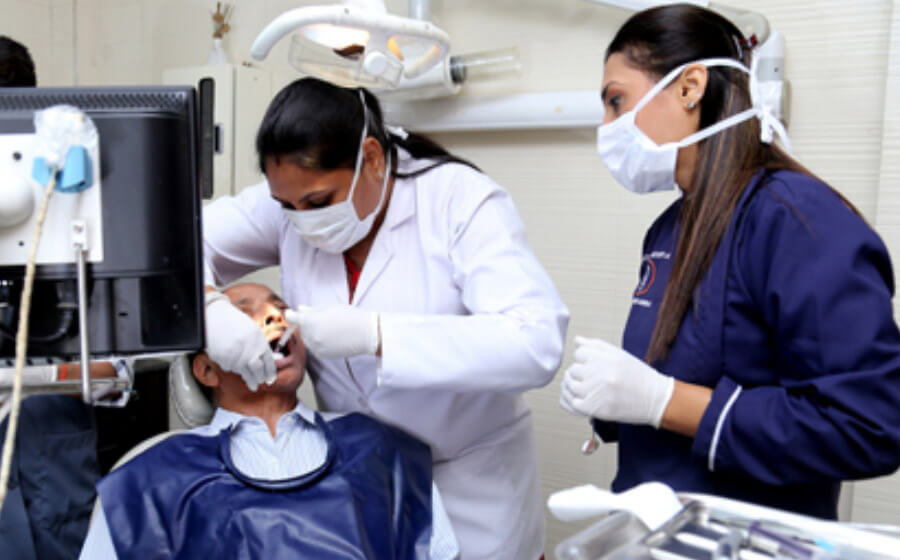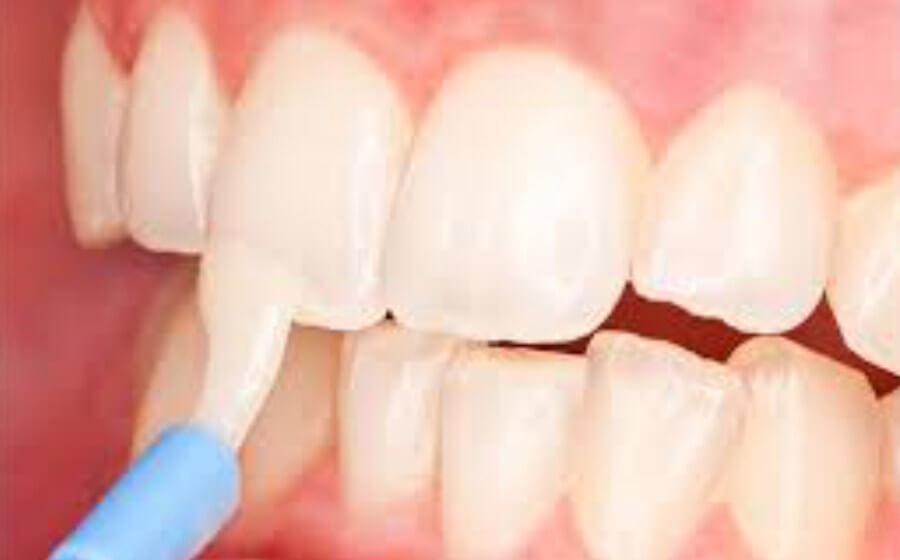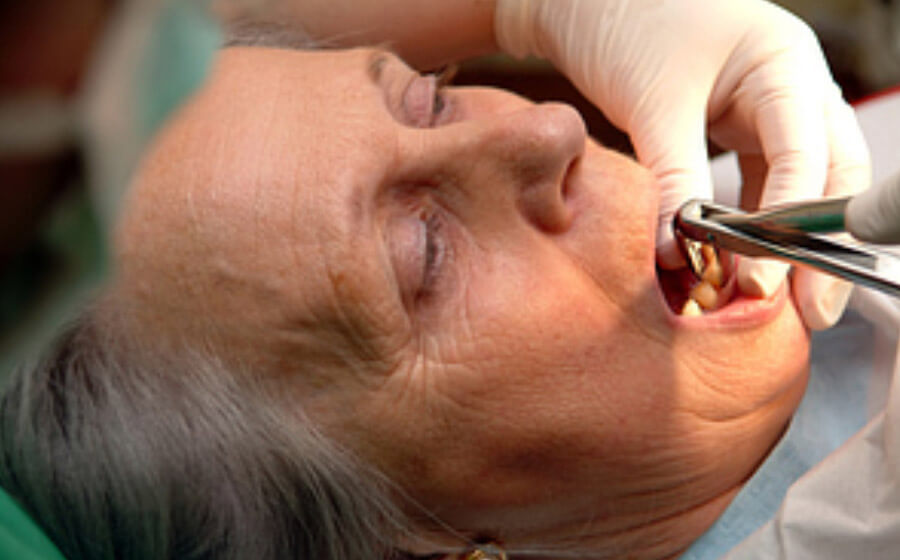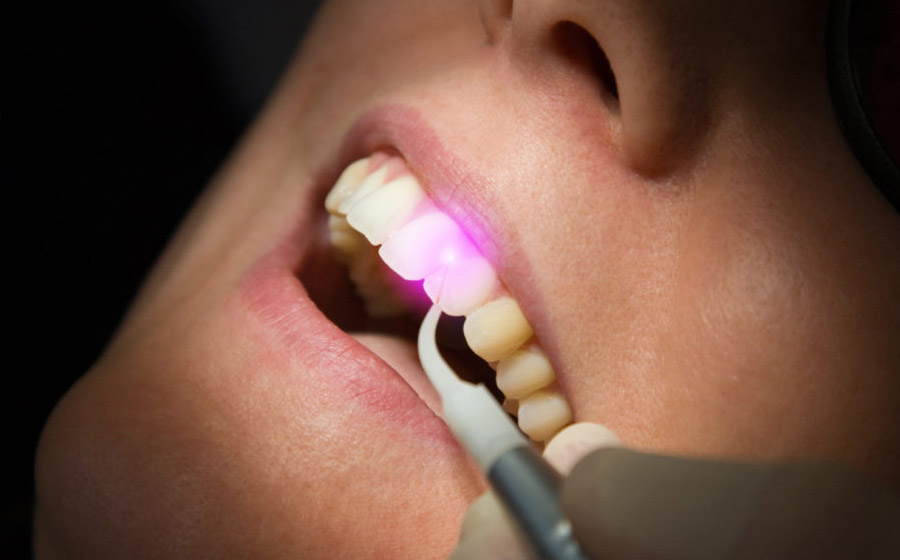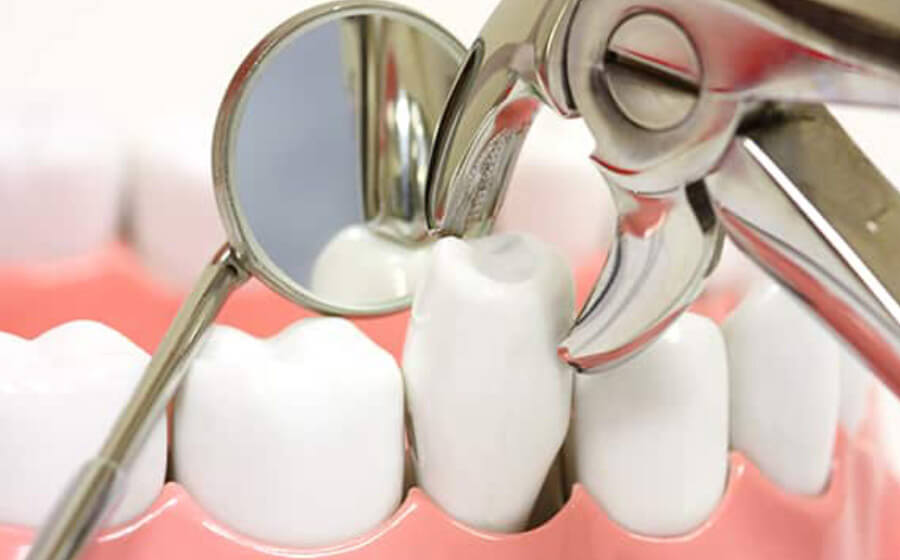
Teeth Without The
Hassle of Brackets
& Wires

Dental Implant
Procedure With
Highest Success
Rate

Dental Treatment
From Our Expert
Team
Our Mission
WE ARE HERE TO LISTEN TO YOU
” To ensure you have the perfect smile “
Our Mission as a professional dental health care team is not only to ensure the best treatment possible using recent advances, but to ensure that you, as a client, are in total satsfaction with your treatment, and your smile.
Complete Dental Care under One Roof
What Our Patients Say
Here are some feedbacks from our amazing patients after their treatment with Focus Dental Services
Latest Blog
4 reasons to get adult braces
Are you an adult considering undergoing the procedure of having your teeth aligned using braces? Despite the fact that the concept may be intimidating, adult braces could be one of the greatest decisions you ever make for your overall well-being and oral health, especially if you were unable to have them as a teenager. There exist several plausible explanations for this circumstance. The following four persuasive arguments will prompt you to seriously contemplate embarking on the endeavour.
The misalignment of one’s teeth may negatively affect confidence and self-esteem. Engaging in social interactions with acquaintances, colleagues, or strangers may be hindered to some extent if one is overcome with self-consciousness regarding their smile. By modifying your bite and progressively realigning your teeth, adult braces provide a solution that culminates in a smile you will be pleased to flaunt. There is a strong likelihood that an increase in confidence will ensue as your teeth gradually realign into their proper positions. You will feel more comfortable and able to smile more readily in a variety of social situations as a result.
In addition to their aesthetic benefits, adult orthodontics have the potential to enhance oral health. Inadequately aligned teeth can give rise to various dental complications, including but not limited to crowding, interdental infection, and irregular wear. Over time, dental caries, periodontal disease, and even tooth loss are all possible consequences of these problems. By means of rectifying the alignment of the dentition, braces facilitate the adherence to fundamental oral hygiene procedures, including flossing and brushing. This, consequently, diminishes the probability of encountering dental complications in the future. The implementation of adult orthodontics in one’s youth can effectively mitigate the risk of developing subsequent dental issues and expensive procedures.
Avoiding the Development of Additional Dental Problems: Adult braces are utilised to correct issues associated with misaligned teeth. This practice not only enhances one’s current oral health but also aids in the prevention of subsequent dental complications. Crooked or crowded teeth have the potential to induce uneven pressure on the mandible, thereby increasing the risk of developing temporomandibular joint (TMJ) problems and recurrent headaches. The realignment of your bite and teeth that occurs during the course of orthodontic treatment facilitates a more uniform distribution of forces, thereby reducing the burden on your jaw joints and mitigating associated discomfort. In addition, the prevention of excessive attrition on specific teeth through the correction of alignment errors not only prolongs their lifespan but also diminishes the probability that they will necessitate expensive restorative procedures in the future.
Despite the fact that you may initially experience anxiety, wearing braces as an adult is a long-term investment in your smile and general health. Orthodontic technology advancements in recent years have enabled adult braces to become more comfortable and less conspicuous than ever before. In contrast to conventional braces, transparent aligners offer a more understated alternative that enables individuals to achieve orthodontic treatment overtly without attracting undue attention. It is critical to remember that the momentary inconvenience associated with braces is negligible when compared to the long-term advantages of possessing a more aesthetically pleasing and health-conscious smile, which you will feel empowered to flaunt to others.
Ultimately, adult orthodontics can provide a plethora of benefits beyond the aesthetic improvements they manifest. Orthodone treatment as an adult can aid in the prevention of future dental issues and the improvement of oral health. Additionally, it can increase your self-esteem and confidence, which are all advantages of getting orthodontics. However, why should we continue to wait? Presently is the moment to initiate the process of attaining a more radiant and healthier smile.
Visit Focus Dental in our locations in Naraina Vihar, Max Hospital, Saket and Max Hospital, Shalimar Bagh, for additional information on selecting the best dentist. To schedule an appointment, give 8929265020 a call today.
A closer look at dental fillings
The most common method of restoration for teeth that have been shattered is the use of fillings. Fillings are used in dentistry to repair teeth that have been damaged as a result of either trauma, caries, or general wear and tear. There is a wide range of dental fillings available, each of which possesses a unique collection of benefits and desirable characteristics. This article takes a more in-depth look at the many types of dental fillings that are available.
- White fillings, also known as composite fillings, are made up of a combination of glass and plastic. White fillings are frequently used in dental reconstruction. They are a good choice for filling front teeth since they are designed to reflect the colour of the teeth, which makes them an excellent alternative when aesthetics are of the utmost importance. Because of their lower durability, composite fillings may require replacement more frequently than amalgam fillings. This is because composite fillings are composite.
- Secondly, amalgam fillings, which are also known as silver fillings, are made up of amalgam that is composed of mercury, silver, copper, and other metals. They are a fantastic choice for filling molars and other parts of the mouth that need a significant amount of mastication effort because of their longevity and strength. amalgam fillings are less aesthetically pleasing than other filling materials since they are visible when speaking or smiling. This is because amalgam fillings are made of mercury.
- Ceramic fillings, alternatively known to as porcelain fillings, are constructed of a glass material similar that which is employed in the manufacture of dental crowns. They have a high level of resilience, longevity, and durability. As a result of their ability to blend in with your teeth and disappear when you talk or smile, ceramic fillings are an excellent choice for fillings in the front teeth. Ceramic inlays, on the other hand, are more expensive than other filler materials.
- Fillings made of glass ionomer Acrylic and glass are the two components that make up the makeup of glass ionomer filling mixtures. Due to the fact that they do not possess the same level of durability as other types of fillings, they are typically utilised as temporary fillings or for the purpose of repairing little patches of degradation. It is possible to use glass ionomer coatings to line the root surface after a root canal procedure has been performed.
When picking a dental filling, it is important to take into consideration your financial constraints, the degree of erosion or damage, and the location of the filling. Make an appointment with your dentist to discuss the type of filling that is most appropriate for your specific need. Do not ignore a tooth that has been damaged; a filling can help restore function and prevent future damage from occurring.
Visit Focus Dental in our locations in Naraina Vihar, Max Hospital, Saket and Max Hospital, Shalimar Bagh, for additional information on selecting the best dentist. To schedule an appointment, give 8929265020 a call today.
Are your wisdom teeth bothering you?
Five million people need their wisdom teeth out annually for a variety of reasons. It is uncertain when the teeth should be pulled and when they can stay in place, despite the fact that the treatment is normal.
Long-term tooth retention might cause discomfort or other serious dental health issues that need to be addressed. If issues develop, have your wisdom teeth extracted right away. Regular dental exams are the most effective way to find out.
The following seven signs could indicate that you need to get your wisdom teeth extracted!
1. Excruciating Pain
When you experience oral discomfort, you should schedule a dental procedure. This is particularly true if the pain persists even after taking medicine, cleaning, or flossing.
Since there are several possible explanations for this problem, more investigation could be required to identify the underlying cause.
The pain at the back of your mouth is probably coming from your wisdom teeth. Pressure feelings in the mandible or gums could occur. Occasionally, though, the pain could spread to other parts of the mouth. See your dentist for a checkup and x-rays if the discomfort persists.
2. Enlargement of the Gums
Inflamed gums are a part of wisdom tooth anxiety. Tightness, heat, and irritability may be experienced by the gums as a result of the wisdom teeth erupting.
Wisdom teeth often erupt from the back of the mouth without breaking through the gingival tissue. Consequently, misery will not end. Gum tension relief and tooth removals necessitate oral surgery.
3. Teeth That Suffocate
Because of their size, wisdom teeth cannot fit into the majority of jaws. Teeth that are already erupting may move as a result.
Due to congestion, wisdom teeth extraction is usually necessary for young people whose smiles cannot be corrected with orthodontics. This suggests that the teeth’s excessive size is pressuring the other teeth to move. After the wisdom teeth are removed, everything should fall into place, allowing the other teeth to reposition.
4. Disorders of the Jaw
For optimal health, maintaining appropriate jaw opening and closure is essential. The jaw must move appropriately to chew food and process it for digestion.
Under certain circumstances, wisdom teeth may prevent the jaw from closing.
Even though TMJ difficulties are sometimes misinterpreted as these concerns, extraction of the teeth would be a more direct and long-lasting remedy.
5. Five Sturdy Cavities
There may be difficulties with grooming wisdom teeth that are crowded or partially erupting at abnormal angles. Cavities and tooth decay rise as a result.
Speak with your dentist about the reason behind your recurrent cavities. Eliminating your wisdom teeth will help you avoid cavities and lessen oral bacteria.
6. Elevated sinus pressure
Despite their close proximity, we hardly ever think about the connection between our sinuses and the roots of our teeth. Our sinuses may be strained by overgrown wisdom teeth, which can cause excruciating discomfort and a heavy head feeling.
If the discomfort comes from your jaw and doesn’t go away after treatment, it’s coming from your wisdom teeth.
Thankfully, wisdom teeth very seldom result in this. As soon as it occurs, you should get medical attention right away to continue your regular activities and stop further pain.
7. Cautionary Signals
Rarely do dental procedures to remove wisdom teeth have bad outcomes. Even if there are no problems, remove them. especially if you anticipate not being able to receive the treatment in the future.
Many women get their wisdom teeth extracted before having children because they are unable to have them removed while pregnant.
Indications of wisdom tooth extraction
Having dental pain disrupts your everyday routine and makes it difficult to fully enjoy life. If the wisdom teeth are the source of the pain, their removal can help somewhat.
Selecting skilled, compassionate oral surgeons with years of experience extracting wisdom teeth like yours is crucial. Whatever the situation, our staff can ensure your happiness and swiftly return you to your regular schedule.
Make an appointment for oral surgery right now! Every year, five million people require wisdom teeth extractions for a variety of reasons. Even though it’s a routine surgery, it might be difficult to know when teeth should be extracted and when they can be left in.
Overly edentulous teeth might be uncomfortable or lead to other oral health problems that need to be taken care of. If issues arise, get your wisdom teeth extracted right away. Routine dental examinations are the best source of information.
Visit Focus Dental in our locations in Naraina Vihar, Max Hospital, Saket and Max Hospital, Shalimar Bagh, for additional information on selecting the best dentist. To schedule an appointment, give 8929265020 a call today.
Everything you need to know about ceramic braces
Ceramic braces are a type of orthodontic appliance that are made from a ceramic material. They are used to straighten teeth and correct bite issues. Unlike traditional metal braces, ceramic braces are less noticeable due to their tooth-colored appearance.
Prior to discussing the rationale behind our decision, it is imperative that we establish the approach in question. The primary difference between ceramic braces and traditional metal braces is that ceramic braces are constructed from a translucent or tooth-colored ceramic material, which enhances the visual appeal of your teeth. While not entirely imperceptible, they are more inconspicuous than their metallic equivalents.
Types of Ceramic Braces
The term “ceramic braces” is commonly used to describe braces made of materials that have different colours but similar shades. In addition to ceramic, braces can also be constructed from frosted or ‘aesthetic’ plastic in order to blend with the colour of your teeth.
Advantages of Ceramic Braces
- Ceramic braces can provide inconspicuous therapy for severe malocclusion, which may not be achievable with clear aligners.
- Due to their ability to blend in with the colour of teeth, they are challenging to perceive from afar.
- Ceramic braces possess a high level of durability. Ceramic braces are designed to have the same level of durability as metal braces, while metal braces utilise a more resilient material.
- They can be altered to become even more inconspicuous. To reduce their visibility, inquire with your orthodontist regarding the use of transparent bands and silver wire.
What is the duration of treatment with ceramic braces?
The speed of treatment depends entirely on the patient, as no equipment can expedite the process. Transparent aligner users may have shorter treatment durations, primarily because to less pronounced malocclusion. Fortunately, ceramic braces do not require any additional time compared to standard procedures.
Comparison between lingual braces and ceramic braces
Lingual braces differ from ordinary braces as they hide the brackets by placing them on the inside side of the mouth, behind the lips. Individuals may find ceramic braces more appealing due to their discreet nature, although this treatment has the potential to create abrasions or speech abnormalities in certain individuals.
Techniques for Cleansing Ceramic Braces
Ceramic braces are prone to discoloration due to its composition, in contrast to metal braces. Consequently, they will require additional care during the cleaning process. To eliminate plaque in all areas, it is advisable to brush immediately after meals and floss directly against the braces. Some individuals have had positive outcomes by utilising baking soda and toothpaste for the purpose of cleaning. Utilising reusable straws can effectively prevent liquids from coming into touch with your braces.
Adults undergoing orthodontic treatment
There is a growing trend in the number of individuals seeking orthodontic treatment, with aesthetics being the primary driving factor. It is understandable that many individuals may experience self-consciousness during their therapy sessions due to years of concealing their teeth with insincere smiles or refraining from smiling altogether.
Adult patients are particularly attracted to the more discreet alternatives to traditional metal braces. Various degrees of invisibility in treatment design can be attained by the utilisation of ceramic braces, clear aligners, and lingual braces, although each method possesses its own set of constraints.
Comparing clear aligners to ceramic braces.
A significant number of individuals who prefer to conceal their dental realignment are intrigued by the increasing prevalence of transparent aligner therapies, such as Invisalign®, Spark®, and 3M Clarity. While transparent aligners are favoured by those who prioritise their appearance, they may not be appropriate for all situations.
Transparent aligners may not be suitable in cases where there are significant spaces between your teeth or if your treatment requires tooth extraction. On the other hand, ceramic braces may achieve the same intricate tooth adjustments as traditional metal braces; the only difference is the material utilised.
Caring for ceramic braces
Ceramic braces necessitate virtually identical upkeep as conventional braces. This article provides information on the types of foods that should be avoided until your braces are removed, as well as instructions on how to properly clean your braces. It is important to consume meals and drinks such as coffee and red wine in moderation because they have the potential to discolour porcelain surfaces.
Visit Focus Dental in our locations in Naraina Vihar, Max Hospital, Saket and Max Hospital, Shalimar Bagh, for additional information on selecting the best dentist. To schedule an appointment, give 8929265020 a call today.
Tooth Extraction
Teeth extraction is a procedure that involves pulling a tooth from its dental socket in the jawbone. It can be performed for various reasons, such as damaged teeth, infection, gum disease, crowded or full mouths, orthodontics, radiation treatment, and cosmetic reasons.
There are two types of extractions: Simple and Surgical.
Simple extractions are performed on visible teeth using an elevator and forceps, while surgical extractions are performed on teeth or parts of teeth that the dentist cannot see. The procedure is more difficult and requires an incision, and general anesthesia is used.
To ensure a safe and effective tooth extraction, it is essential to inform your dentist about your medications and medical history, as well as any potential risks such as liver disease, weakened immune system, artificial joints, pregnancy, congenital heart defects, damaged heart valves, or bacterial endocarditis.
Preparations for simple extraction involve numbing the tooth, bone, and gum removal area with local anesthesia, while surgical extractions require an X-ray to guide the procedure. Some dentists may prescribe antibiotics for patients with compromised immune systems, infections, or infections.
Before surgery, it is important to avoid eating or drinking anything for eight hours, consult your dentist if you experience symptoms, and avoid smoking the day before the extraction.
Tooth extraction is a surgical procedure that involves inserting a gauze pad into the socket and having the patient bite on it for several hours to stop bleeding. Dry sockets arise when a blood clot ruptures, exposing the socket. The dentist uses anti-inflammatory medications to alleviate the agony of the removal procedure. To reduce edoema, apply ice packs to the face surrounding the extraction area and rinse your mouth with warm saltwater 24 hours after extraction.
Post-extraction instructions should help you recover and prevent problems after a simple extraction and surgery. Refrain from smoking for 72 hours before and after the extraction, brush and floss frequently, and avoid alcohol for 24 hours after the extraction.
Healing from extraction usually takes two weeks or less, and the bleeding and swelling subside a day or two after extraction.
Potential risks and consequences following tooth extraction include dry socket, infection, prolonged bleeding, communication, sinus exposure, soreness and swelling, nerve injury, bruising, tooth loss, accidentally harming surrounding teeth, unfinished extraction, misdiagnosis, and jaw osteonecrosis. If diagnosed early, mouthwash, antibiotics, topical gels, and dental work can be beneficial.
Pain and suffering are common after tooth extraction when the anesthesia wears off, and symptoms may include dry socket symptoms, shortness of breath, cough, chest pain, fever and chills, excessive non-bloody discharge from the extraction site, swelling worsening, numbness in the chin, tongue, and lip, and difficulty swallowing. It is essential to call the dentist following tooth extraction to discuss any symptoms and provide appropriate treatment.
Visit Focus Dental in our locations in Naraina Vihar, Max Hospital, Saket and Max Hospital, Shalimar Bagh, for additional information on selecting the best dentist. To schedule an appointment, give 8929265020 a call today.
Transparent braces are the ultimate orthodontic solution
Many mature-aged and adult patients at Focus Dental express a desire for straighter teeth but are apprehensive that it is too late to make the necessary improvements. Their perception is that they have been left behind and they abhor the thought of donning conventional braces. The only thing that is more false than the truth (or a tooth!) is nothing. Alternatives exist for individuals of all ages to conventional metal braces.
Presently, clear aligner therapy is a more aesthetically appealing alternative. It is a widely utilised method of dental straightening. This is referred to by some as “clear braces.” Further reading will reveal what they are and whether or not they represent the most effective method to attain the smile of your desires.
Simply put, “clear braces” refers to malleable, translucent plastic dental appliances utilised for the purpose of aligning teeth. These are custom-fabricated to precisely contour to the user’s teeth and are commonly known as aligners. Presently, a variety of manufacturers offer translucent braces, such as Invisalign®.
The utilisation of these revolutionary Invisible braces has witnessed a surge in popularity since their initial introduction as a teeth-straightening technique. It is distributed in more than one hundred countries and has aided in the recovery of more than seven million individuals.
This alternative orthodontic treatment corrects teeth without the use of brackets and wires by employing CAD/CAM technology to fabricate transparent plastic removable aligners, commonly referred to as trays. While each aligner in the prescribed sequence exhibits some variation, they all employ mild pressure to incrementally shift your teeth into position. In order to increase the ability of the aligners to grasp and shift the teeth, treatment may require the addition of tooth-colored attachments, also known as “buttons.” The only times these aligners should be removed are when brushing your teeth or ingesting. Daily, they are required to be worn for a duration of 22 hours.
Do metal braces surpass the quality of Invisible Braces?
In contrast to popular belief, Invisible Braces is not exclusively intended for aesthetic purposes; rather, its technology has evolved to the point where it can be utilised to address a diverse array of moderate to severe teeth straightening concerns. Orthodontists and dentists who are Invisible Braces -certified are capable of effectively managing an extensive spectrum of orthodontic movements due to the utilisation of state-of-the-art technology.
It is crucial to acknowledge that although clear braces exhibit superior performance in certain circumstances, braces demonstrate superior functionality in others. It is always preferable to consult a dentist first, as they can advise on the most effective treatment for your teeth. Your dentist can provide guidance on the most suitable course of action for your teeth and the range of options that are available to you, taking into consideration the severity of the alignment.
For the treatment of the preponderance of orthodontic issues, Invisible Braces are effective, including:
- Underbites are characterised by the protrusion and overlap of the lower row of teeth over the upper row.
- Overbite is the inverse of an underbite.
- Open bites manifest when the upper and lower teeth are incapable of contacting one another.
- Overcrowding of the mandible is characterised by an inadequate amount of space for the teeth, which may result in the misplacement or improper positioning of some or all of them.
Teeth in alignment refers to one or more teeth that are out of alignment.
The majority of people, including adults and teenagers, can use invisible braces. Schedule an appointment with us at Focus Dental. We might even be able to suggest a better, more practical solution for you!
Visit Focus Dental in our locations in Naraina Vihar, Max Hospital, Saket and Max Hospital, Shalimar Bagh, for additional information on selecting the best dentist. To schedule an appointment, give 8929265020 a call today.
Are you new patient?
If you have never visited our offices before, we ask that you complete some basic paperwork before your
appointment to decrease wait-times.
best dental clinic in Saket Delhi, Best Dentist in Naraina Vihar,Best Dentist for Kids l Kids dentistry in Delhi,Best Dentist in India,Best Dentist in Shalimar Bagh,Best cosmetic dentist in Delhi,Best Dentist for Children in Saket,Best Dental Clinic in Naraina Vihar,How to cure gum disease without a dentist,How to remove tartar from teeth without dentist,best dental clinic in Saket Delhi,TEETH WHITENING,

